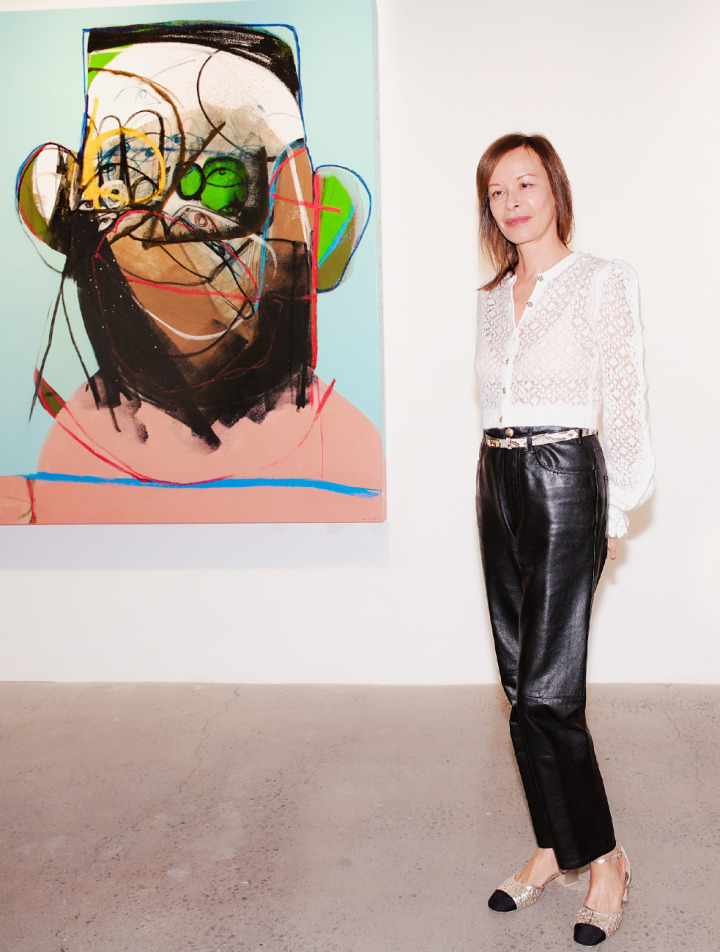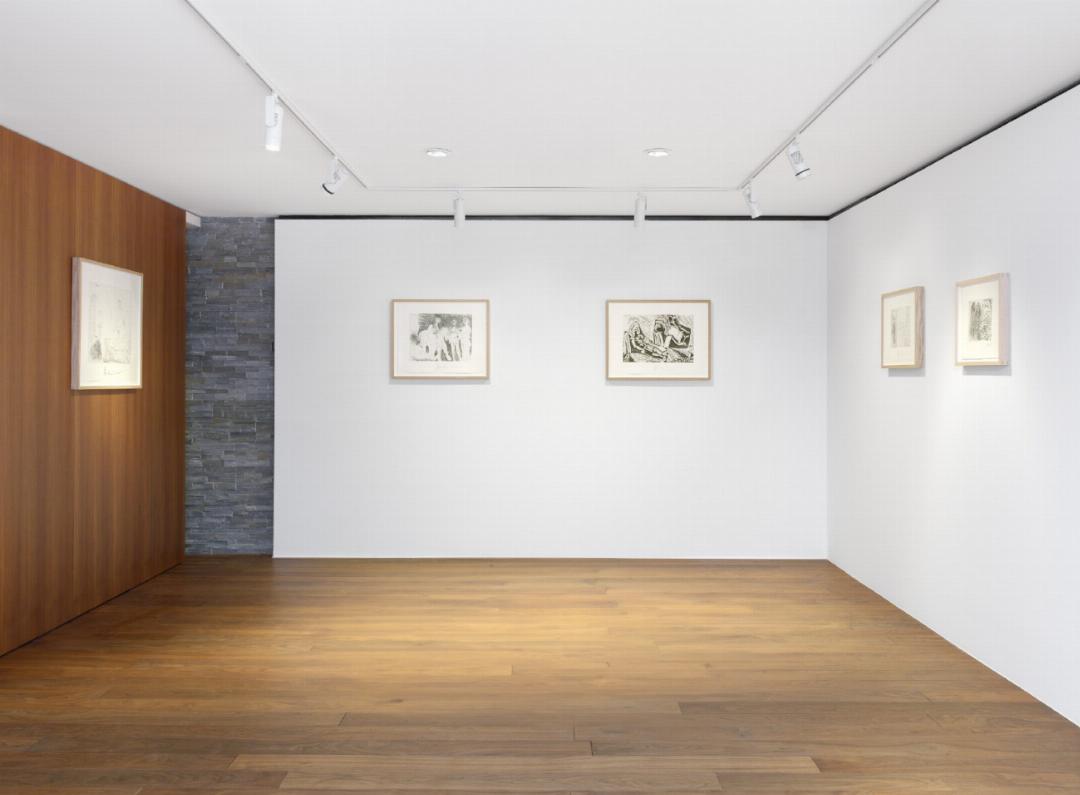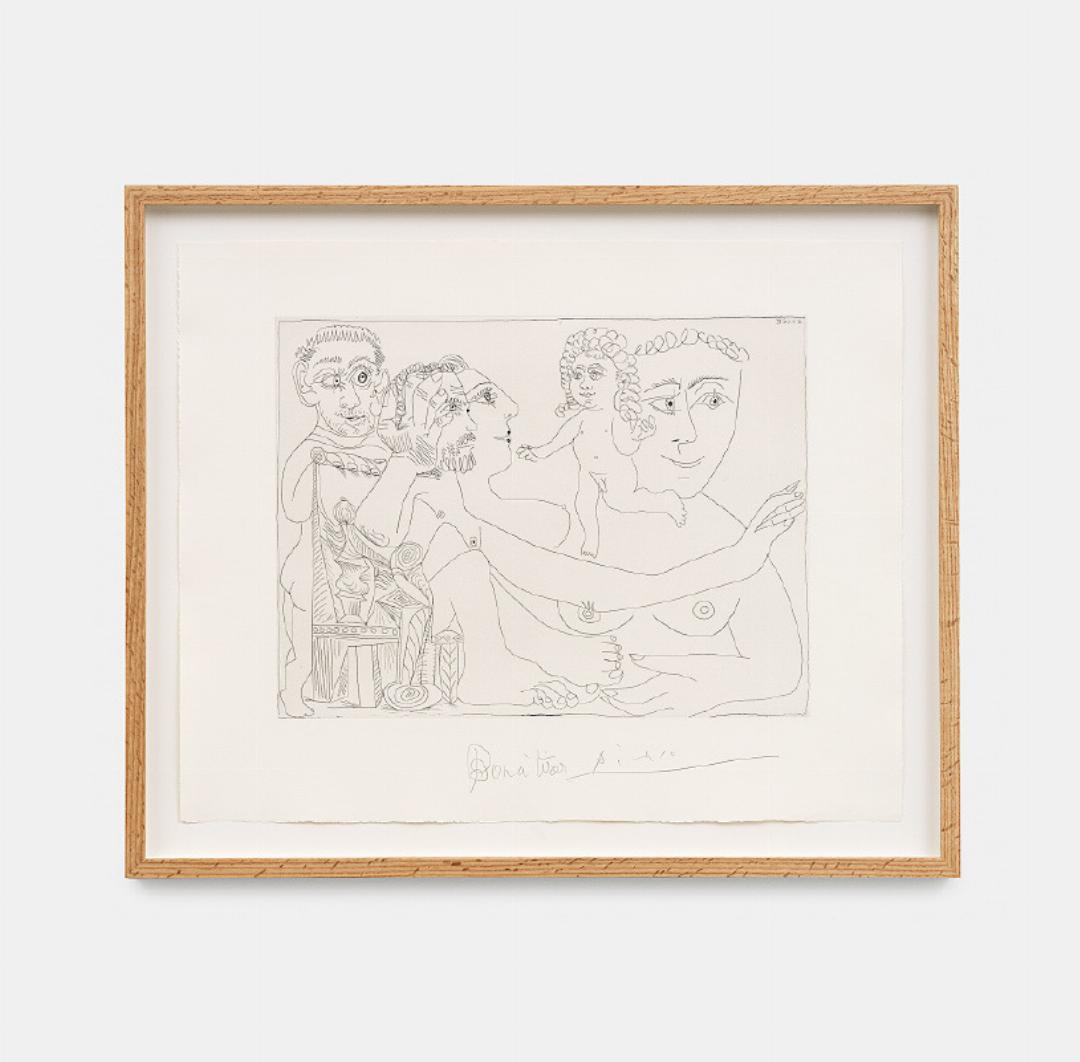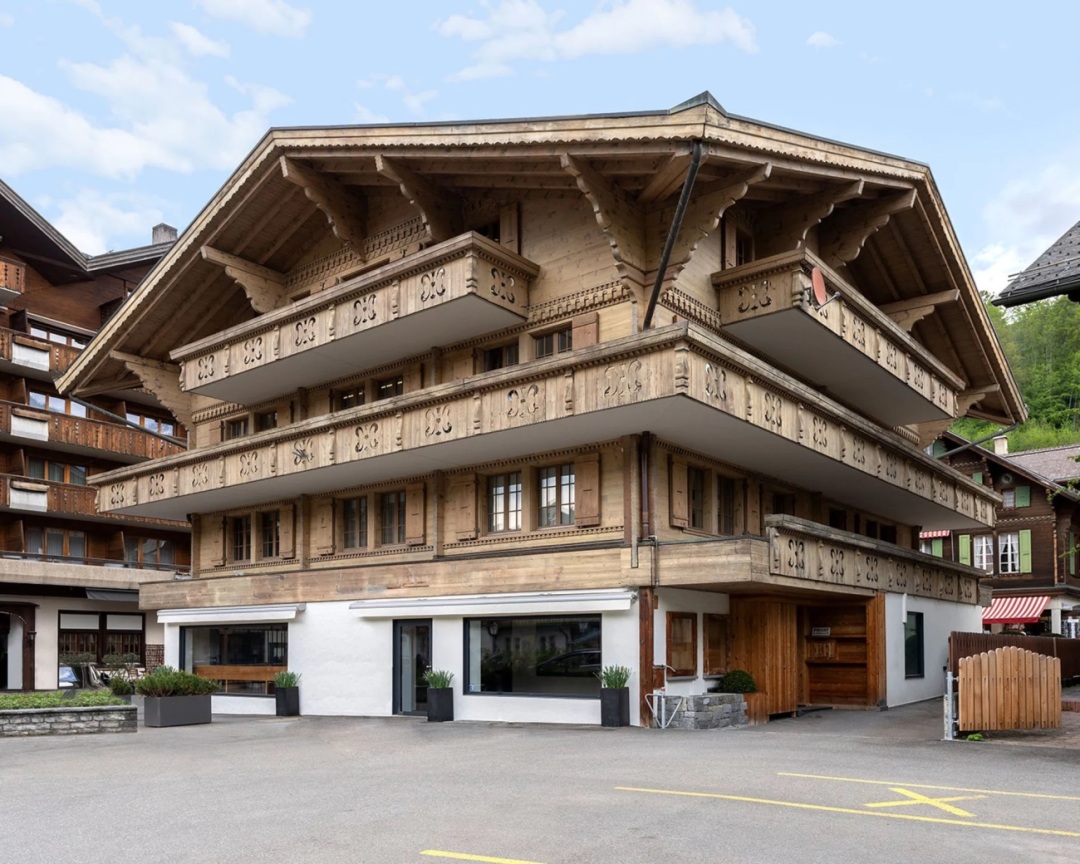Almine Rech - a long-due presence
16.02.2024 Profile, Gallery & Exhibitions, Gstaad Living, Profile, Lifestyle, BusinessA LONG-DUE PRESENCE
Mrs. Almine Rech Ruiz-Picasso in conversation with artist Anthony Bannwart
Established in 1997 with its roots in Paris, Almine Rech, the eponymous gallery, has expanded to include two locations within the city. The gallery’s ...
A LONG-DUE PRESENCE
Mrs. Almine Rech Ruiz-Picasso in conversation with artist Anthony Bannwart
Established in 1997 with its roots in Paris, Almine Rech, the eponymous gallery, has expanded to include two locations within the city. The gallery’s footprint has grown further, encompassing a restored flagship Tribeca gallery in New York and reaching across international destinations such as London, Brussels, Shanghai, Monaco, and, as of last December, Gstaad.
We started a spontaneous conversation upon the present of Picasso’s unique Bon à Tirer etchings from the Crommelynck studio, which were successfully exhibited at her new gallery space at the train station in Gstaad. It felt like having a living book in my hands, not only on modern and contemporary art but of a modern woman constantly confronted with time and space, to most historical, iconic masterpieces and most contemporary artworks while having a romanesque, and family life like no others in this art world.
Unlike any other gallery owners I have encountered so far, Almine Rech is certainly a household name. What is less known is her deep roots in our dear Saanenland for decades. Growing up between Paris and Switzerland, she is the daughter of fashion precursor Georges Rech, who was one of the 3 main fashion designers who created prêt-à-porter in the 60’s. The young Almine seemed to have immersed herself in fashion at a young age, hence the defined style she deploys to this day. Influenced by her mother, from Vietnamese roots and her family leaving Vietnam in the 50s for Paris, and behind also a part of their history, being a descendant of the Great Mandarin Maï Trung Cat of the North, her great-grand-father. Her love for the mountains is vivid, recalling herself on alpine skis in Switzerland from the age of three and a half. Today, however, she is more into cross-country skiing, in fact, almost every day. When speaking of the nature of the Saanenland, she depicts with care her love and attachment and the feeling of calmness and fullness. When in 2000, Almine Rech married Bernard Ruiz-Picasso, grand-son Pablo Picasso and Olga Khokhlova, she would then not only carry the name Ruiz-Picasso but with it the immense responsibility of the estate. Together, in 2002, they founded the Fundación Almine y Bernard Ruiz-Picasso para el Arte (FABA). This speaks alone for her attachment to the great era of 20th-century modern art alongside the latest generation of contemporary artists represented by her today.
Today, living between all her locations, her chalet in Gstaad holds a very important place in her heart. The family is back for almost two months a year. With their children as boarding students at the Le Rosey, the family has spent unforgettable times here and continues to do so at every Le Rosey alumni weekend. “Gstaad has largely exceeded the notion of a ski resort to become a place where you want to be, just be.” She points out, interestingly, something that emerges here “of a telluric nature, a great calmness, that allows reflection”. About the Saanenland style of building and living, she answers, “there is a preservation of the aesthetics, let’s say traditional, that I love.”
At Almine Rech Gstaad, in this opening exhibition enhanced by Picasso’s unique ‘bons à tirer’, I must confess being most compelled by the series ‘David, Bethsabée et le Prophète Nathan’ with its mixed etching techniques, drypoint, aquatint, and scraper or sandpaper on copper, at play in each masterpiece. Magnetized, and often tributing major art and science personalities, a spreading infatuation to respond was stirring me when Almine Ruiz-Picasso suddenly crowned the instant with: “See how Picasso signed with a loop? You’ll know how happy he was with the result.” Among the great painters, she explains, only Rembrandt and Picasso loved engraving to this extent. “There aren’t so many others, aside from Matisse, who made engravings, but not in such quantity and over such extended period. Picasso and Rembrandt were passionate about engravings.”
Almine and Bernard Ruiz-Picasso also spent time in Boisgeloup, which became notorious after a report by Brassaï in the 1930s.
The iconic Brassaï was only a young photographer at the time and had been sent by his magazine to take pictures of Picasso sculpting from 1930 to 1937 in his transformed ateliers in front of an 18th-century château in Normandy. Olga Khokhlova and Pablo Picasso’s only son, Paul, lived part-time on the property until his passing in 1975. Bernard and Almine decided to breathe life back into it in a contemporary way through their FABA foundation and the château itself, which the couple now use as a country house.
When I asked her how artwork has to speak to her, she replied that having worked for a long time in this field, things are quite simple, in fact. “After a certain number of years in a profession, when intuition is enriched by years of experience, you can still follow your intuition, but not the impulsive kind, though. The artwork has to speak in an immediate way, both aesthetically and emotionally, and then you meet the artist. So, I do a lot of studio visits because the curator must also connect humanly with a living artist. When the artists are no longer alive, working with the estate turns the collaboration into something different.”
Art is something very subjective and also very relational, says Almine Rech about how her collectors evolved over time. The human relationship counts in art, and she has created an exponential faithful circle over the years. Over time, she observes that more than an identity between collectors defined itself, “it’s more like affinities being confirmed”.
“Collectors are very open because it’s the very definition of an art collector, to be open-minded. There are two kinds of collectors: some very historical, who complete their collection because it is linked to the first half of the 20th century, extending to the 1970s. Then there are the contemporary collectors who are more open to the end of the 20th and especially the 21st-century works. These are ready to take risks with the younger artists and have a stronger openness to commitment to a connection with contemporary society and its social challenges.”
As an artist, I praise the artist’s ethics above all. Art and ethics belong to us, first and foremost to the ones who do it, who act for the common good. Only with the help of influential gallerists and mindful collectors can ethics be defended.
“It’s obvious that artists praise ethics, and collectors know that we are looking for stable collections. If a collector starts to speculate – meaning reselling quickly after purchasing – he or she is not welcome at all.” Almine Rech confirms that her artists would not be happy if a gallery weren’t careful, leaving an art piece without understanding where it is going. Ethics becomes equally important after the passing of the artists when their descendants try to pursue or create the artist’s estate with the expertise of Almine Rech.
With all the locations Almine Rech succeeded in opening around the world, one could wonder at this level if this would be enough and if art fairs are still valuable for her. But they are. Fairs create new encounters with those who can’t always travel far to visit galleries. Fairs like Shanghai or Art Basel Hong Kong, to name two, are significant places to meet people who are building a collection. When wandering in the alleys of an art fair, you can definitely appreciate more female artists, and at Almine Rech, there are also new female collectors who favour female artists in their collections. You can also meet with very young collectors, “who are barely 30 years old, and we try to find for them, sometimes, an artwork on paper of a great deceased artist”, which is very important to start with.
We both agree that with the conflicts we are facing in the 2020s, the works of the 1920s resonate very strongly today in Europe. Otto Dix for instance, and George Grosz she would add, who in Germany were pulling the alarm bell by seeing things degrading in terms of tolerance. “It’s true that today they resonate, unfortunately, very strongly. The Guernica of Picasso today, that’s it. We are in that picture today.” asserts Almine Rech.
This February, Almine Rech will exhibit a great master from South Korea, the artist Ha Chong-Hyun, from an art movement that started right after the Korean War. While not excluding their traditions, on the contrary, with the help of their artistic traditions, it was the first time that Asians were looking at the West to develop an abstract work which is very philosophical and peaceful, responding to our needs and the natural atmosphere here.
Now, with the reinforcement of another level in art, Almine Rech is among us, where she truly belongs.
ANTHONY BANNWART
Aline Rech Gstaad
Chalet Wilibenz
Bahnhofstrasse 1,
3780 Gstaad, Switzerland
Tuesday — Sunday, from 11 :00 to 18:00








